Description
Numerous intense orange flowers bloom for weeks on an upright, compact habit. Perfect for mixed beds or borders.
$14.00
Out of stock
Numerous intense orange flowers bloom for weeks on an upright, compact habit. Perfect for mixed beds or borders.
| Weight | 1 lbs |
|---|---|
| Dimensions | 4 × 4 × 4 in |
| Height | |
| Zones | |
| Color | |
| Blooms | |
| Light |
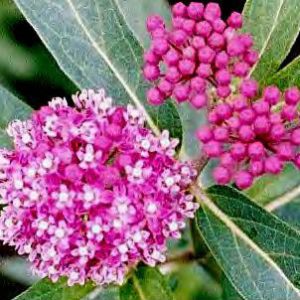
‘Cinderella’ is a cultivar of native Asclepias incarnata (Swamp Milkweed) featuring pale pink, vanilla scented flower clusters. This milkweed occurs throughout most of the United States. It is a tall plant found in moist habitats such as wet meadows, floodplains, riverbanks, pond shores, stream banks, wet woods, swamps, and marshes, although it will also grow in drier areas such as prairies, fields, and roadsides. Swamp milkweed needs full sun or partial shade to flourish. Flowers are very attractive to butterflies and bees as a nectar source. Swamp milkweed is also an important food source for the larval stage of Monarch butterflies.The plants are deer resistant and heat tolerant.

Easily grown in average, medium moisture soils in full sun to part shade. Prefers moist, fertile, humusy soils which do not dry out. Cut plants to the ground in late winter. Best propagated by stem cuttings. This species generally grows … Read More
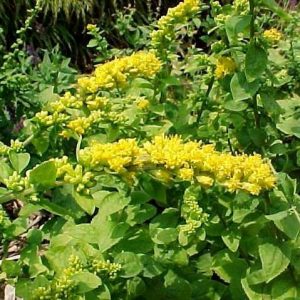
Another fantastic Mt. Cuba introduction. A stunning show of sprays of golden yellow flowers from mid-August through September. Semievergreen heart-shaped leaves. Truly an excellent groundcover and bee and butterfly charmer! Hairstreaks, sulphurs and skippers are particularly attracted to goldenrod. Monarchs visit it during their autumn migration.
Goldenrod Interesting Notes
Golden Fleece autumn goldenrod was discovered in 1985 as a spontaneous garden seedling in Eden, North Carolina. It was evaluated under diverse conditions at Mt. Cuba Center and determined to be a low-growing, compact form of the species suitable for use as an herbaceous perennial groundcover only reaching 18” tall. Multi-branched stems arise from basal rosettes of broadly rounded foliage and are covered with a profusion of golden-yellow floral spires from mid-September to October. It performs best in full sun with average moisture but is tolerant of a range of conditions from sunny and dry to partial shade. 'Golden Fleece' is hardy in zones 3-8. It won the Internationale Stauden-Union’s Award for an outstanding new plant in Switzerland in 1994. – Mt. Cuba Center
In many of the gardens I design, I use goldenrod to give late summer and fall gardens just the right autumnal color. Luckily for urban dwellers with limited gardening space, goldenrod also can be grown quite successfully in a container. Beautiful in the garden, goldenrod does double-duty as a long-lived cut flower. In Europe, where goldenrod has long been shown the appreciation it deserves, it is sold by the bunch, and gardening catalogs offer more cultivars than are available in the States.
Solidago sphacelata 'Golden Fleece' Growing and Maintenance Tips
Native to calcarous woodlands and rocky pastures from Virginia to Illinois south to Kentucky and Georgia. Prefers somewhat fertile, sandy, well-drained soils in full sun. Propagate by seed or division every 3-4 years. Cut back to encourage rebloom. Used in butterfly and wild gardens or as a groundcover or border perennial.
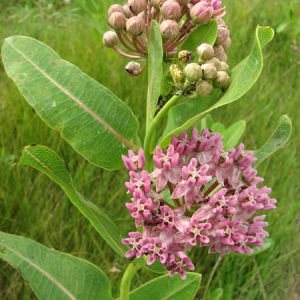
Winner of the 2015 Green Thumb Award for Best New Product!
Also known as Prairie Milkweed, Sullivant’s Milkweed is a long-lived perennial and a well-behaved relative of Common Milkweed. Very similar in appearance, it is less aggressive and an excellent choice for butterfly gardens. Prairie Milkweed grows best in a sunny, medium to medium-moist garden. The pinkish, mauve flowers are very fragrant and attract hummingbirds, bees, and butterflies. Sullivant’s Milkweed is listed as ‘threatened’ in Minnesota, Wisconsin, Michigan.
Available – May 2017

Pink spikes of flowers mid to late summer make Steeplebush a popular species. It grows best in moist acidic soils in full sun. Slow rhizomatous roots help this beautiful plant to spread.
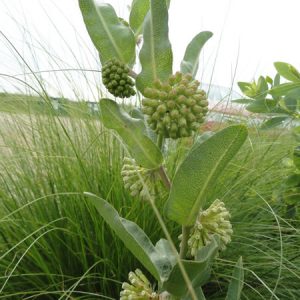
Asclepias viridiflora Short Green Milkweed is a Michigan native milkweed. While somewhat rare it has an extensive range throughout the United States. The plant matures to 1-3′ in height making it a nice choice for borders. Short Green Milkweed blooms during early summer with blooms lasting about three weeks. Flowers are light green to green and as the plant matures the flowers begin to turn yellowish green or purplish green. It prefers full to partial sun and grows in a variety of soils but prefers dry-mesic to mesic. Habitats include openings in upland forests that are rocky or sandy; upland black soil prairies, sand prairies, gravel prairies, and hill prairies; barrens, limestone glades, and sand dunes; and abandoned fields.
The flowers attract bumblebees and butterflies. Also known as Green Milkweed, Green Comet Milkweed, Green Antelopehorn Milkweed, Green-Flowered Milkweed.
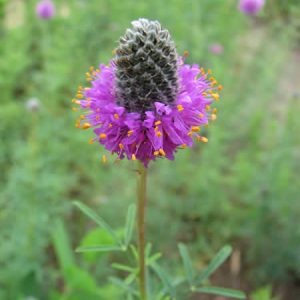
Host Plant – Sulphurs
Tiny rose-purple flowers in cylindrical, head-like masses at ends of upright wiry stems.
This is one of the most widespread of the perennial Prairie Clovers, identifiable by their cone-like flower heads. An excellent range species, with high protein content, Purple Prairie Clover decreases in abundance with overgrazing. A midwestern white-flowering species, White Prairie Clover has elongated flower heads and is only 2 (60 cm) tall. A white-flowering southeastern coastal plain species, D. carnea var. albida, has conspicuous green bracts within the heads.
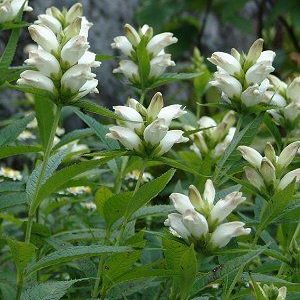
Host Plant – Baltimore Checkerspot
Spikes of elegant white flowers top shiny green foliage in late summer and early fall. Grows best in moist meadows, stream banks, and swamps. Favorite breeding site for the Baltimore Checkerspot Butterfly.
Our 2024 plant list will be available in mid-Febrary 2024. Orders will begin to ship in May - June 2024 Dismiss
